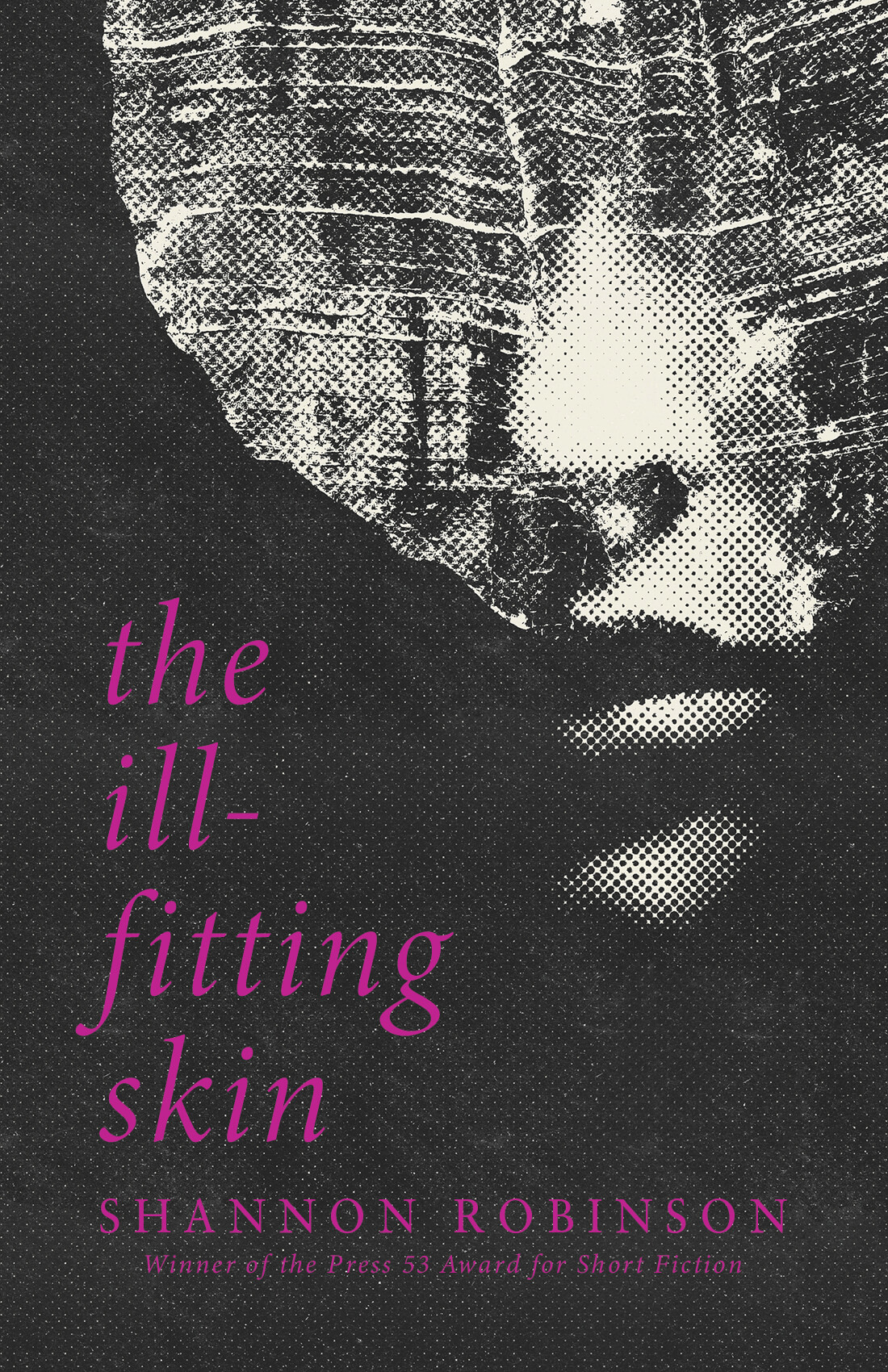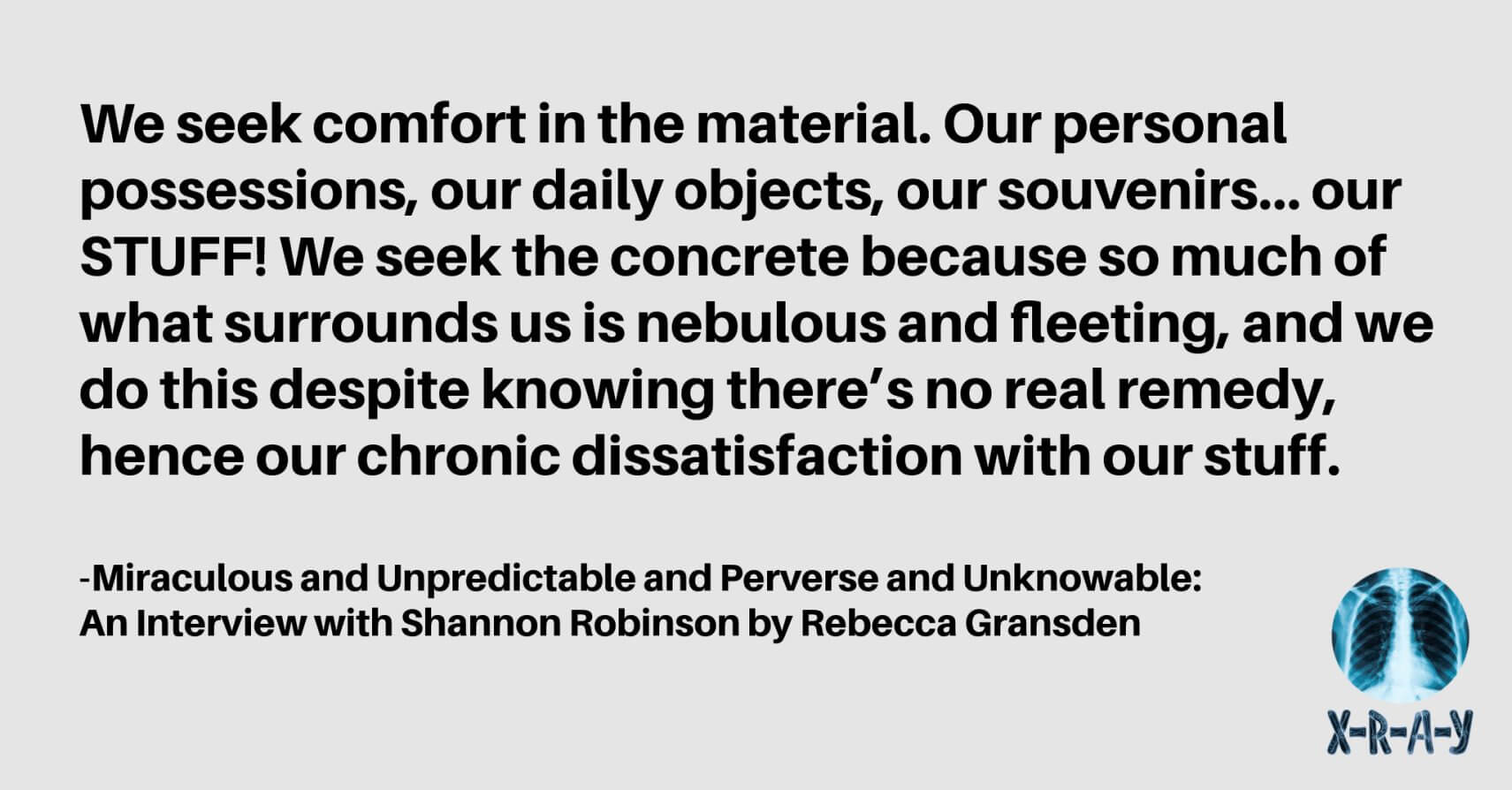Primeval forces threaten to invade the worlds of Shannon Robinson’s short stories. Wild presences haunt suburbia, and folkloric figures surface as manifestations of deep-seated anxieties. For the collection The Ill-Fitting Skin (Press 53, 2024) Robinson presents normal life in all its complexity and confusion, where Mother Nature shows her claws and mythic creatures bare their teeth. This skin is pregnant with dread, imbued with the surreal, and, like a serpent, ready to shed and transform. I spoke to Shannon about the book.

Rebecca Gransden: What is the story behind The Ill-Fitting Skin? When did you conceive the collection and how long has it been in gestation?
Shannon Robinson: I love your choice of verb – “gestation”: it feels very apt, since many of my stories are concerned with motherhood and nurturing. I’ve been working on these stories for about twelve years, beginning with my MFA at Washington University in St. Louis. Over the years, I’ve placed work in literary magazines, but the more recent stories are exclusive to this collection.
RG: The collection opens with “Origin Story,” an unsettling tale that deals with parenthood, childhood, and dark, primeval forces. The house featured in the story begins to experience a type of invasion, initially by something unknown. Why did you choose an ordinary family home for the setting of this story?
SR: “Origin Story” is about a boy who turns into a wolf, and while lycanthropy is a fantastical phenomenon, I wanted there to be an underpinning of emotional authenticity. I think the best monster stories hit close to home: the darkness is scary because it’s inside us, or right beside us, implicating us. As parents, it can be so difficult for us to separate ourselves from our children, and this is especially fraught if the child is challenging or troubled or non-conforming. And sometimes the distance itself is the issue—that is, the parents’ anger and alienation. The original title for the story was “This Thing of Darkness I Acknowledge Mine,” which is something Prospero says of Caliban in The Tempest, but I eventually settled on “Origin Story,” because it had more directness, more punch … less lah-di-dah.
RG: Several of the stories address the meeting point of superstition and science. Lycanthropy is presented as possible metaphor for a medical diagnosis, and unusually fantastical births suggest underlying psychological unease. Yet, there is the impression that neither pathway leads to a comprehensive or satisfactory answer. What is your approach to the rational and the paranormal when it comes to your fiction?
SR: I trust the rational, but that’s not to say I don’t think there are times when we recruit the rational to justify the non-rational, or that the non-rational does not leak in around the edges. The medical advancements of the past fifty years alone have been astonishing, and yet there’s still room to get it wrong because we’re dealing with the incredible complexity of the human body and mind, and we can’t help but be human along the way. Are we still drilling holes in people’s heads to let out the evil spirits? No. But are we sometimes misdiagnosing and overmedicating? I’d say, yes. And here’s the thing: despite the fact that we carry our bodies and brains around, despite their quotidian normalcy, there are times when they seem so odd—miraculous and unpredictable and perverse and unknowable—that they are like magic, for good or for ill.
RG: I’m wearing purple socks with teddy bears on them in a raised, rubberized pattern. The hospital provided them. These I will keep. I will wear them around the apartment for the next few days until the soles get dirty and I begin to worry about the state of the unswept floors.
In “Miscarriages” ordinary items meant to soothe accentuate the sense of disquiet. These objects suggest the search for a type of material grounding in the face of events that evoke much confusion. From Feng Shui, origami cranes and unsettling gynecological crafts, objects in their juxtaposition inhabit a surreal and unsettling space within the story. What part do these objects play?
 SR: As you suggest, we seek comfort in the material. Our personal possessions, our daily objects, our souvenirs… our STUFF! We seek the concrete because so much of what surrounds us is nebulous and fleeting, and we do this despite knowing there’s no real remedy, hence our chronic dissatisfaction with our stuff. “Purchase”: there’s a lovely doubleness to that word, suggesting something we buy but also the act of trying to find a hold. Many of the objects from the story are artistic items—and art is a special kind of container for our anxiety. The story is written in sections, which I think of as containers, which in turn feature containers of one kind or another (lists, ultrasounds, a medical model …) along with that most profound of containers, the womb.
SR: As you suggest, we seek comfort in the material. Our personal possessions, our daily objects, our souvenirs… our STUFF! We seek the concrete because so much of what surrounds us is nebulous and fleeting, and we do this despite knowing there’s no real remedy, hence our chronic dissatisfaction with our stuff. “Purchase”: there’s a lovely doubleness to that word, suggesting something we buy but also the act of trying to find a hold. Many of the objects from the story are artistic items—and art is a special kind of container for our anxiety. The story is written in sections, which I think of as containers, which in turn feature containers of one kind or another (lists, ultrasounds, a medical model …) along with that most profound of containers, the womb.
RG: “The Rabbits” makes reference to the 18th century case of Mary Toft, a woman who claimed to have given birth to a brood of rabbits. There is a fairytale-like quality to the sequence of events. What led you to take on your own version of the story?
SR: I came across the historical material after falling down a Google rabbit hole, appropriately enough: I must have been researching something related to maternity, and I somehow came across this hoaxster, Mary Toft. She really did fool people for a time, including the king’s physician; granted, she was very committed to the act, which involved some gruesome props. I was interested in writing a version where Mary experiences her rabbit births as authentic and miraculous—and yet she is perceived as a fraud and a trouble-maker. I like your comparison to fairytales, because their form suggests dream-like exploration rather than settled conclusions. I was interested in writing about the strangeness of conception, pregnancy, and childbirth… about its uncanny aspects and also about how, during these experiences, women can feel their agency is compromised, or at least, complicated.
RG: Several of the stories address the idea of lost children. What draws you to this theme?
SR: I have lost a child, through miscarriage, so I have that personal connection to the theme. And even though I now have a child, I still feel terror at the prospect of losing him. Which is not to say that I’m white-knuckling it minute by minute, but it’s there in the background (as I imagine it is for every parent). I’m also interested in what we lose as children—the phrase “loss of childhood innocence” comes to mind, but I hope to capture something less corny, or at least, more complex in its presentation. For instance, even children who do not experience an emotional loss directly can have survivor’s guilt, which is its own kind of trauma, and you see that at play in some of my stories.
RG: Animals are presented as substitutes for human children, from a womb-dwelling bird and rabbits, to pets. The nature of attachment, of judgment, of maternal need, is a theme common to the collection. How do you view your use of animals, and the animalistic, for The Ill-Fitting Skin?
SR: I love animals… but I also eat and wear them, so I deal with that daily paradox. I think animals occupy such a fascinating category: they are us, and yet they are not us; essential and yet alien. They make for uncanny comparisons, hence the power of fables. And Art Spiegelman’s Maus. With animals, the metaphorical doesn’t want to stay metaphorical, and I suppose I’m drawn to that sense of uncomfortable proximity. And that vulnerability. Animals are fierce and self-sufficient, and yet (increasingly) we see how their existence is fragile.
RG: Truth be told, I had the kind of cleverness that readily alchemizes into stupidity by way of vanity. Five years in a PhD program and nothing to show for it except a box of rambling notes. So this is indeed my penance for being so ineffectual, I’d tell myself as I scrubbed, wiped, scoured. The idea was that it was a temporary gig, a stopgap, and soon a real job would surface. Like a magical island. Or a dead body.
One of the characters that has stayed with me since reading the collection is the uncommunicative and off-putting householder Hartley, featured in “Dirt.” How did you go about creating him? There is a sophisticated progression in the dynamic between the two characters central to this story. What was your approach to characterisation in this case?
SR: In “Dirt,” the narrator doesn’t sign up to be a “sexy” cleaning lady, but she finds herself playing that role for her new client, Hartley. When the story was first published in Joyland magazine, I was so surprised to find that some people—some women—found Hartley to be “endearing”! I see him as quietly menacing and highly manipulative. Granted, the narrator’s first impression of him is that he’s a dork, and so when he pushes her boundaries, she keeps trying to convince herself that she’s in charge. Or at least, that she’s okay with this, that she’s willing to be a good sport for the paycheck, that making these accommodations isn’t shaming and infuriating. Ultimately, his dorkiness is just a red herring, and she sees he has no qualms about pursuing his desires at her emotional expense.
In writing this story, I very much had gender dynamics in mind, but I was also influenced by my time as an office worker, which in retrospect, had shades of the Stanford Prison Experiment.
RG: If you decide to hate boys forever and ever, turn to page 92.
If you decide to just hate this boy, turn to page 98.
For “A Doom of Your Own” you take on the Choose-Your-Own-Adventure form in a way that is psychologically revealing. What attracted you to use this structure? Later in the collection D&D plays a significant role in the story “You Are Now in a Dark Chamber,” and a zombie parade is the backdrop for the interpersonal strifes of “Zombies.” What role do these games and niche cultures play in the collection?
SR: I grew up reading Choose Your Own Adventure books in the ’80s, and I loved the way they allowed me to participate in the story, how “you” got to choose where the story went next. At the same time, as a fan of the genre, I became aware that choice was an illusion, and even when you think you’re doing everything right, you get trapped in loops, or end up lost in the dungeon or eaten by the ant people or whatever. I thought that sense of frustration (and gaslighting and self-sabotage…) would lend itself well to a story about a toxic romantic relationship. You don’t have to be a child of the ’80s to appreciate “Doom of Her Own,” but I have found that Gen X readers particularly enjoy its nostalgia element. As for games and niche cultures, there’s an underdog feel to them, which I find appealing. In “Zombies,” the narrator berates another character for referring to zombie cosplay as “hipster”; she says that “it’s full-on Renaissance Fair, Dungeons & Dragons, no irony.” In other words, not “cool”—which I think is a good thing (even if my narrator doesn’t). I also like the fantasy aspect of these activities. There’s often a certain amount of gothic inflection… as well as humor. And horniness. It’s very story-friendly.
RG: A theme that is returned to throughout the collection is that of transformation. Sometimes your characters are in a place of denial, at other points led by unconscious impulses, or have transformation foisted upon them. What use do you make of transformation in the collection? Have any transformative experiences of your own influenced these stories?
SR: As I recall, in Charles Baxter’s Burning Down the House, he disparages the notion of epiphany in fiction: he finds it all very phony baloney. My characters don’t exactly have epiphanies—there is no big, “And then I realized…” moment, no definitive pivot into clarity. But the characters come close, and I hope that I leave them (or at least most of them) in a place where they can move towards some positive transformation—that is, towards some greater understanding, strength, or happiness.
As for transformative experiences of my own that have influenced these stories… they’re all what you’d expect: motherhood, my MFA, and marriage to a fellow writer who loves me and really cares about my writing. Aging in general has been good for me: less vanity-selfishness-insecurity, more wisdom-kindness-confidence. All that has helped me to become a better writer. A better person, with crappier knees. Fine.
RG: There are many references to myths, legends, and folklore dotted throughout The Ill-Fitting Skin. Is this an area of inspiration?
SR: Absolutely! Since childhood, I’ve been interested in fairytales (the Grimm versions; Disney’s versions are fun, but the originals are where the truly fascinating weirdness lies) and Greek mythology. I have a copy of D’Auliares’ Book of Greek Myths, which I won as a Creative Writing prize in sixth grade and have treasured ever since. I had its beautiful illustration of Demeter reunited with Persephone in mind as I wrote the ending of “Miscarriages.”
RG: How did you decide upon the title for the collection?
SR: The original title was No Good Will Come of This, which felt like a minor tribute to Alice Munro’s Who Do You Think You Are? (the Canadian title of The Beggar Maid)… but I ran it by a test audience, and it did not fare well. So I went through the stories and made a list of images and phrases that popped out at me. The phrase “an ill-fitting skin” occurs in the last paragraph of the story “Dirt” in reference to a garment that the narrator is throwing in the trash—a dress that she wore with great ambivalence for a male audience. I thought that phrase really spoke to externally imposed expectations and confining notions of identity: so many of the stories’ characters struggle with these. And I liked the fairytale feel of that phrase, “ill-fitting skin”—like it’s an enchantment, a curse… a prison, but also possibly a chrysalis, ready to be shed.
RG: Looking back on the stories, and the time in which they were written, how do you feel about the collection now? What lies next for Shannon Robinson?
SR: I feel very proud of these stories, and it’s always wonderful to hear that people have been moved by them. As for what lies ahead… more writing and more readings. I love giving readings! It’s the theater kid in me. Right now, I’m working on a novel about a Victorian baby killer. There’s a love story in there, so it’s not quite as grim as it sounds. Tenderness: I can promise you that.

